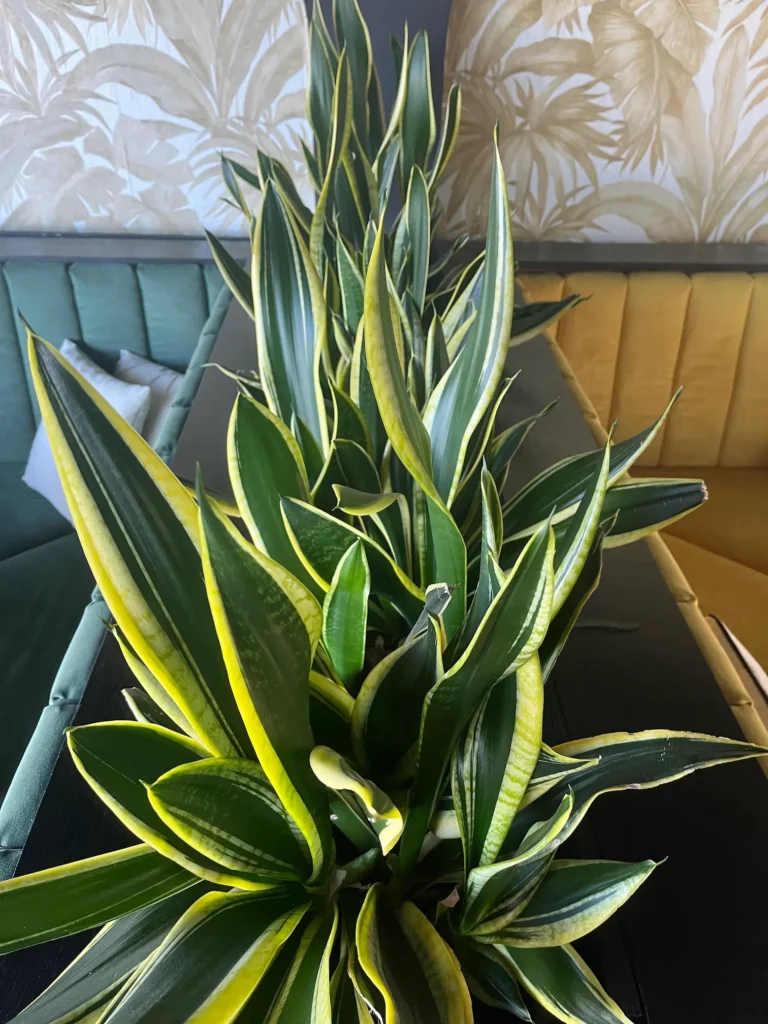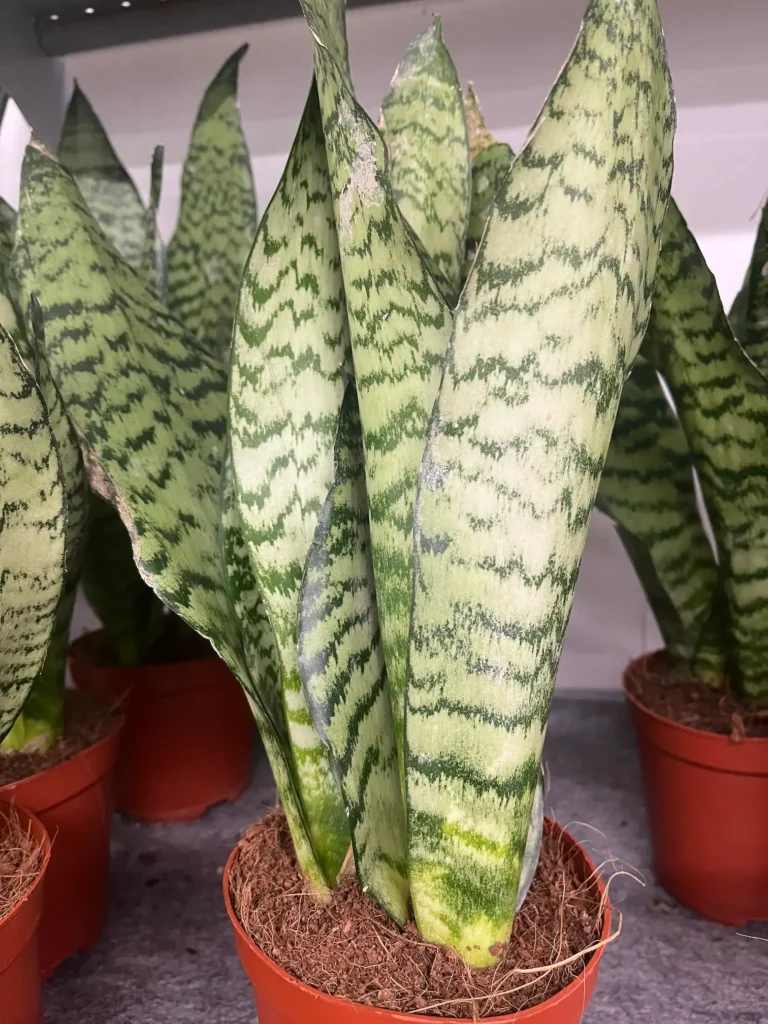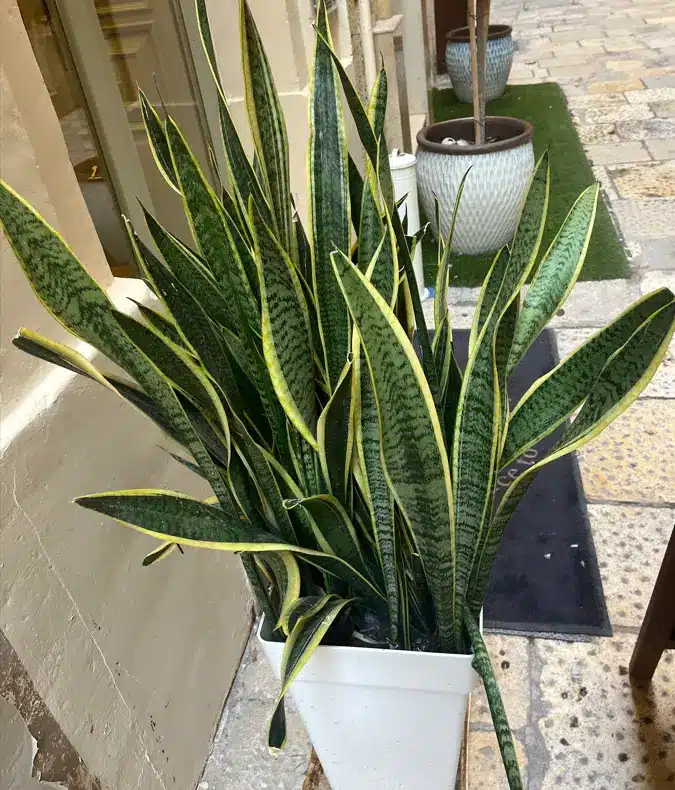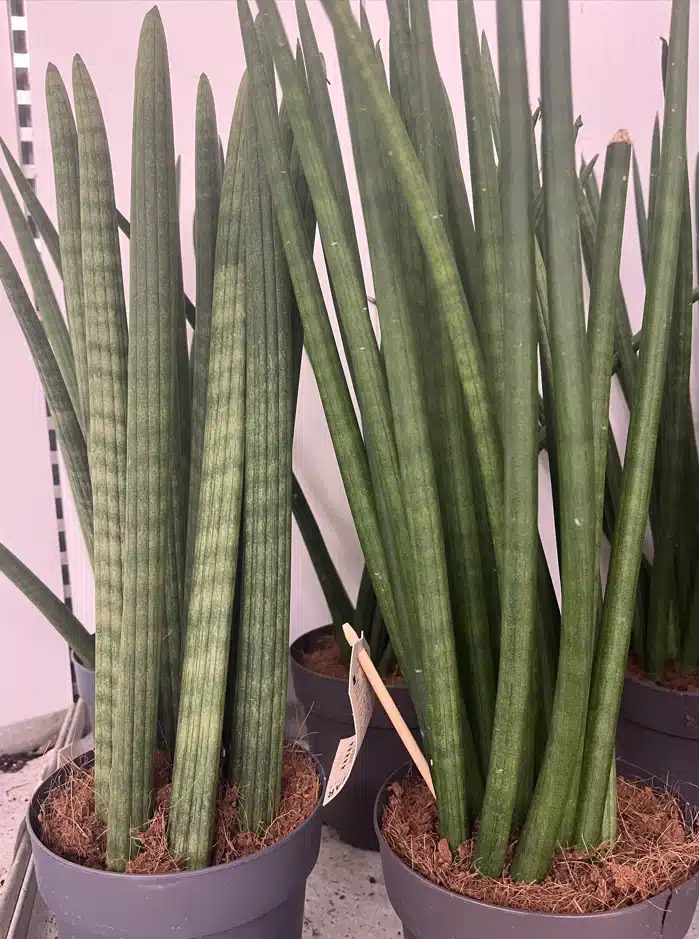Care for Sansevieria - Snake Plants

Key takeaways - Sansevieria
-
Common Plant Name
- Snake Plant
-
Botanical Name
- Sansevieria spp.
-
Botanical Family
- Asparagaceae
-
Plant Type
- Perennial
-
Mature Size
- 8-48 inches
-
Sun Exposure
- Low to bright indirect light
-
Soil Type
- Well-draining, sandy soil
-
Soil pH Neutral
- Neutral
-
- Bloom Time
Rarely blooms indoors
-
Flower Color
- Greenish-white
-
Hardiness Zones
- 9-11 (may vary by species)
-
Native Region
- West Africa, Madagascar
Sansevieria is Easy to Care For
Let’s take a look at the fairly common but rather unique-looking Sansevieria plant, and how to give it the right care.
Embracing the “less is more” philosophy, they flourish in an environment that’s a bit on the inhospitable side: low water, low fertilizer, and plenty of sunlight. However, they won’t mind a bit of outdoor summer freshness in a sunny, dry spot. In other words, not too different to many other succulents and cacti.
Best Temperature for Snake Plants
Maintaining the right temperature is crucial for the well-being of Sansevierias. These resilient plants are well-suited for average room temperatures ranging from 60°F to 75°F (15°C to 24°C). They are extremely tolerant to heat and withstand the hottest summer months anywhere. Snake plants don’t really like the cold, but tolerate slightly cooler temperatures, but it’s essential to avoid exposing them to extreme cold, as they are sensitive to frost. Additionally, make sure to protect your Sansevieria from drafts, as sudden temperature fluctuations can stress the plant. By providing a consistent and moderate temperature, you’ll ensure a thriving and healthy snake plant in your indoor space.
Watering
When it comes to watering, Snake Plants are laid-back. They originate from the semi-deserts and dry savannas of Africa and Asia, they’re accustomed to prolonged dry spells. Forgetfulness won’t be held against you – typically, watering every two weeks is sufficient. Allow the soil to thoroughly dry before the next watering. In winter, with reduced light, cut back on watering to once a month without any guilt. Just be cautious not to let water pool in the plant’s rosettes, as this could lead to rot.
Also, ensure no water accumulates in the plant’s pot to avoid potential rot. Make sure the pot has holes for proper drainage.
Best Soil for Snake Plants
In their natural habitat, Snake Plants thrive in sandy, nutrient-poor soils. Opt for simple cactus soil or create a mix of sand and organic universal soil in equal parts. The substrate should be nutrient-light and well-draining. Snake Plants prefer a neutral to slightly acidic pH, ideally between 6.0 and 7.0.
By following these simple yet effective care tips, you’ll ensure your Snake Plant remains a happy and healthy companion in your living space.

Best Pots and Repotting Snake Plants
Due to their slow growth, Snake Plants only need repotting every few years. However, if their robust roots are bursting out, it’s a clear sign they’re ready for a change. Spring is the ideal time for this task, before the plant kicks off the new season. Choose a pot with drainage holes, add a few shards at the bottom for better drainage, place a bit of substrate mix, position the plant, fill the pot with substrate, lightly press down, and give it a little water.

Fertilizing Snake Plants
Snake Plants aren’t fans of too much fertilizer. They prefer a nutrient-light diet. If you’ve recently repotted the plant, hold off on fertilizing until the following year. Opt for a standard cactus liquid fertilizer, adding it to your watering routine. Use only half the recommended amount, and fertilize only during the active growing season – roughly from mid-March to the end of August.
Light
Sansevierias, commonly known as snake plants, thrive in a variety of light conditions, making them adaptable to different environments. However, their best performance is observed in indirect or filtered sunlight. Position your Sansevieria in a location where it receives bright, indirect light for most of the day. While they can tolerate low light conditions, providing them with ample sunlight will encourage optimal growth and vibrant foliage. Remember to shield them from direct sunlight, as prolonged exposure can lead to leaf scorching.
Sansevieria's Air-Purifying Ability
In addition to their aesthetic appeal, Sansevierias are renowned for their remarkable air-purifying abilities. These plants have the capacity to remove toxins such as formaldehyde, benzene, and xylene from the air, contributing to a cleaner and healthier indoor environment. Sansevierias are effective at improving indoor air quality. Their efficient oxygen production and toxin absorption make them an excellent choice for homes and offices alike. Incorporate Sansevierias into your space not only for their visual elegance but also for the positive impact they can have on your overall well-being.
A few common types of Sansevieria
Sansevieria trifasciata (Snake Plant or Mother-in-law’s Tongue):
- Long, upright leaves with green-gray variegation.
- Hardy and adaptable, known for air-purifying qualities.
Sansevieria cylindrica (Cylindrical Snake Plant or African Spear Plant):
- Cylindrical, upright leaves that grow in a fan shape.
- Typically solid green, with a unique appearance.
Sansevieria hahnii (Bird’s Nest Snake Plant):
- Compact rosette formation resembling a bird’s nest.
- Shorter leaves with various color variations.
Sansevieria zeylanica (Ceylon Bowstring Hemp):
- Narrow, sword-shaped leaves with dark green color.
- Tolerant of low light conditions.
Sansevieria moonshine (Moonshine Snake Plant):
- Silvery-gray-green leaves with a subtle, attractive sheen.
- Similar in structure to the common snake plant.
Pruning
Pruning a Snake plant is fairly straightforward, but an important part of maintaining a healthy and nice-looking plant. Remove any discolored or damaged leaves using clean, sharp scissors.
How to Propagate Sansevieria - Guide
Propagation of Sansevieria is a fairly simple venture.
- Choose a healthy leaf, cut it into several inches long sections, and let them callus for a day or two.
- Plant these cuttings in a well-draining soil mix and watch as new shoots emerge, establishing a new generation of Sansevieria.
How to Grow Sansevieria From Seed - Guide
Growing Sansevieria from seed is a patient gardener’s endeavor.
- Harvest seeds from mature pods.
- plant them in a seed-starting mix, and maintain consistent moisture. A sterilized plastic bag can make the germination process more effective.
- Be prepared for slow growth initially, but the satisfaction of nurturing a Sansevieria from seed is truly rewarding.

Sansevieria Cylindrica
How to Get Sansevieria to Bloom
While Sansevieria is not known for its frequent blooms, providing the right conditions can encourage flowering. Ensure it receives adequate light, and don’t shy away from a balanced fertilizer during the growing season.
Overwintering
During the winter months, Sansevieria prefers a dormant period with reduced water and fertilizer. Keep it in a warmer spot, away from drafts, and limit watering to prevent root rot. A good dormancy period gives the plant plenty of energy for impressive growth during spring.
Geographical challenges
Sansevieria is adaptable but sensitive to extreme conditions. Protect it from frost, and avoid exposing it to temperatures below 50°F (10°C). If you live in a colder climate, consider bringing your Sansevieria indoors during the colder months. Since it does not require extremely bright light, it will most likely be fine with a long dark winter on a south-facing windowsill.
Common Pests & Plant Diseases
Keep an eye out for common pests like spider mites and mealybugs. Treat them promptly with insecticidal soap or neem oil. Sansevieria is generally resilient, but being vigilant ensures a healthy, thriving plant.
Common Problems Sansevieria
Overwatering is the primary culprit when it comes to Sansevieria issues. Let the soil dry out between watering, and your plant will thank you with robust growth. Additionally, avoid placing it in low-light conditions for extended periods.
In conclusion, the Sansevieria plant is a fantastic addition to any plant lover’s collection, offering beauty with minimal effort. From pruning to propagation, understanding its needs ensures a happy and healthy Sansevieria. Happy gardening!
FAQ - Sansevieria - Snake Plant
Most frequent questions and answers
Sansevieria can vary in size, but most indoor varieties reach a height of 2 to 4 feet. They grow relatively slowly, so you won’t have to worry about your living space turning into a jungle overnight!
While Sansevieria is not highly toxic, it’s best to keep it out of reach of pets. Ingesting the leaves may cause mild symptoms like nausea or vomiting. If you suspect your pet has ingested any part of the plant, consult with a veterinarian. Snake Plants are also toxic for humans but the symptoms are much milder.
Absolutely! Sansevieria is easy to propagate. You can do so by dividing the rhizomes or by leaf cuttings. Simply cut a healthy leaf into sections, let them callous for a day or two, and then plant them in well-draining soil.
Yellow leaves can be a sign of overwatering or too much direct sunlight. Allow the soil to dry out and adjust the light conditions. Trim any yellow leaves at the base to encourage new growth.
Absolutely! Sansevieria is known for its adaptability and can thrive in low to moderate light. While it prefers indirect sunlight, it can tolerate lower light conditions, making it a versatile choice for various spaces.
